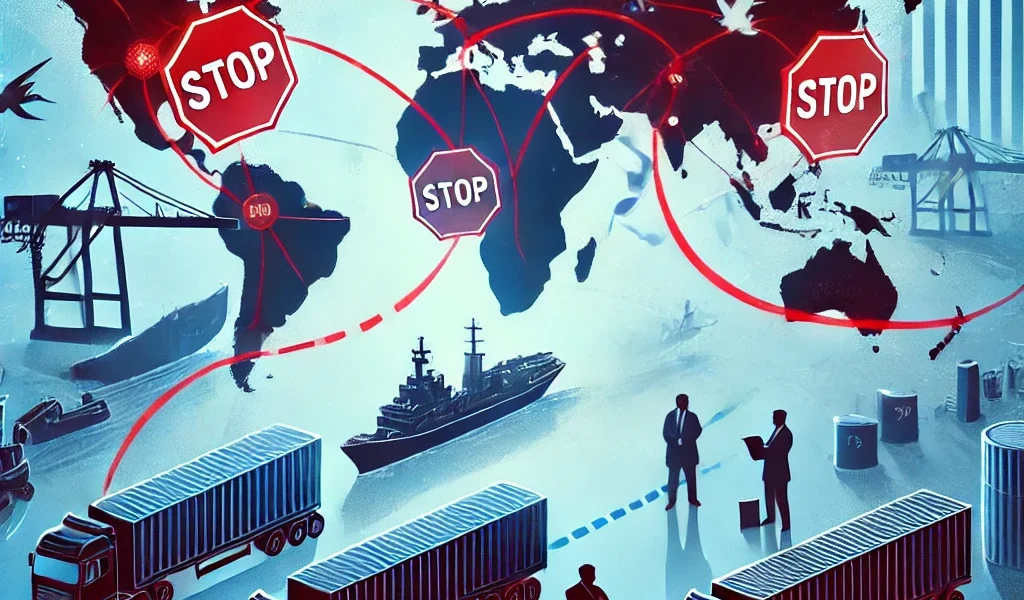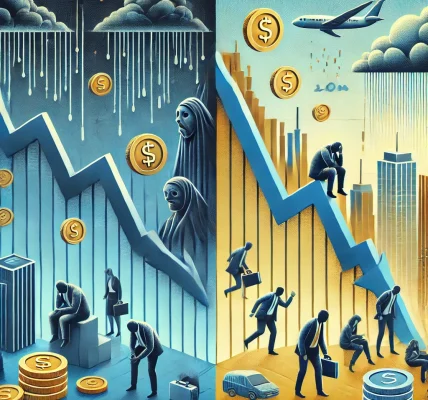Introduction
In the modern globalized economy, supply chains stretch across continents, connecting businesses, manufacturers, and consumers worldwide. However, trade wars and tariffs can significantly disrupt these supply chains, leading to increased costs, production delays, and market instability. Governments impose tariffs and trade barriers to protect domestic industries, but these measures often have far-reaching consequences.
This article explores the impact of trade wars and tariffs on global supply chains, examining key case studies, economic implications, and strategies businesses can adopt to mitigate risks.
1. Understanding Trade Wars and Tariffs
a) What Are Trade Wars?
A trade war occurs when countries impose tariffs or other trade barriers against each other in response to perceived economic threats or unfair trade practices. This tit-for-tat escalation can lead to economic instability and strained international relations.
b) What Are Tariffs?
Tariffs are taxes imposed on imported goods to make foreign products more expensive and less competitive compared to domestically produced goods. Governments use tariffs to protect domestic industries, generate revenue, and address trade imbalances.
c) Common Types of Trade Barriers
- Import Tariffs – Taxes on imported goods
- Export Tariffs – Taxes on exported goods
- Quotas – Limits on the quantity of imports
- Subsidies – Government financial aid to domestic industries
- Regulatory Barriers – Complex standards and certifications that make it difficult for foreign businesses to enter a market
2. Major Trade Wars and Their Impact on Global Supply Chains
a) U.S.-China Trade War
One of the most significant trade disputes in recent history is the U.S.-China trade war, which began in 2018. The U.S. imposed tariffs on Chinese goods worth billions of dollars, and China responded with its own tariffs.
Impact on Global Supply Chains:
- Higher production costs due to increased tariffs on raw materials and components
- Supply chain diversification as companies moved manufacturing from China to other countries like Vietnam, Mexico, and India
- Delays in global shipping and logistics due to trade restrictions
b) Brexit and European Trade Policies
The United Kingdom’s exit from the European Union (Brexit) disrupted supply chains across Europe. New trade agreements and tariffs caused logistical challenges for businesses relying on European suppliers and customers.
Impact on Global Supply Chains:
- Increased customs duties and paperwork delays at borders
- Rising transportation costs due to regulatory changes
- Companies relocating headquarters or warehouses to EU nations to avoid disruptions
c) U.S.-Mexico-Canada Agreement (USMCA)
The replacement of NAFTA with the USMCA introduced new trade regulations affecting supply chains in North America.
Impact on Global Supply Chains:
- Stricter labor laws increasing production costs
- Adjustments in automotive supply chains due to new rules on regional content requirements
- Stability in trade relations among North American countries after initial disruptions
3. Economic Implications of Trade Wars and Tariffs
a) Increased Costs for Businesses and Consumers
When tariffs are imposed, businesses must either absorb the additional costs or pass them on to consumers. This leads to higher prices for everyday goods, reducing purchasing power and economic growth.
b) Supply Chain Disruptions and Delays
Companies that rely on global supply chains may face production delays due to trade restrictions. Businesses are forced to find new suppliers or relocate manufacturing operations, which can be costly and time-consuming.
c) Shift in Manufacturing Hubs
Trade wars encourage businesses to move manufacturing from tariff-affected countries to more stable regions. This can lead to shifts in global trade dynamics, benefitting countries with fewer trade restrictions.
d) Currency Fluctuations and Economic Uncertainty
Trade disputes often lead to currency fluctuations, making imports and exports more expensive or cheaper, depending on exchange rates. Businesses must manage currency risks when operating in multiple markets.
4. Strategies for Businesses to Navigate Trade Wars and Tariffs
a) Diversifying Supply Chains
To minimize the impact of tariffs, businesses should consider sourcing materials and products from multiple countries. This reduces dependence on any single market and mitigates risks associated with trade disputes.
b) Relocating Manufacturing Facilities
Companies can move production to tariff-free regions or countries with favorable trade agreements. Many firms have already shifted operations from China to Southeast Asia and Mexico to avoid U.S. tariffs.
c) Negotiating Better Trade Agreements
Businesses can work with trade associations and government agencies to advocate for policies that reduce tariffs and promote free trade.
d) Leveraging Technology and Automation
Investing in automation and advanced manufacturing technologies can help reduce dependency on international supply chains and improve efficiency.
e) Hedging Against Currency Fluctuations
Companies should use financial instruments like currency hedging to protect against exchange rate risks caused by trade wars.
5. Future Outlook: Are Trade Wars Here to Stay?
a) The Rise of Regional Trade Agreements
Governments are increasingly forming regional trade agreements (such as the Regional Comprehensive Economic Partnership (RCEP) in Asia) to counteract trade war impacts and promote economic stability.
b) Technology and Digital Trade
E-commerce and digital trade are helping businesses bypass traditional trade barriers. Companies that focus on digital services and online sales may be less affected by tariffs on physical goods.
c) The Role of Governments in Stabilizing Trade
Governments are under pressure to strike a balance between protecting domestic industries and ensuring stable global trade. Future trade policies will likely emphasize negotiation and diplomacy over tariffs and restrictions.
Conclusion
Trade wars and tariffs have a profound impact on global supply chains, affecting businesses, consumers, and economies worldwide. While some countries use tariffs to protect domestic industries, these measures often lead to increased costs, supply chain disruptions, and shifts in manufacturing locations.
Businesses can mitigate the risks of trade disputes by diversifying supply chains, leveraging technology, and staying informed about changing trade policies. In the long run, international cooperation and free trade agreements will play a crucial role in stabilizing the global economy.
Disclaimer
This article is for informational purposes only and does not constitute financial, legal, or investment advice. Businesses and investors should consult with professionals before making trade-related decisions.




